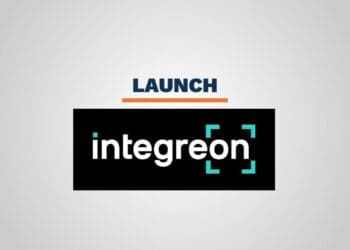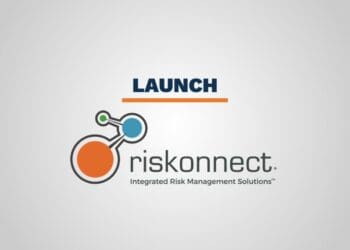In recent years the news has been filled with stories of companies facing public outcry over issues ranging from data breaches to product failures to financial fraud. These issues often bring with them pressure from outside the company. This can come in the form of litigation, government investigations, congressional hearings, or even a prolonged press attack on the company. One common reaction has been commissioning of independent investigations with the goal of producing a report that can be presented to the public to exonerate, or at least improve the public position, of the company. This approach does, however, create certain tensions. Most prominently the tension between providing a public report and keeping confidential the underlying investigative process and material that would otherwise be subject to the attorney-client privilege. A recent decision from the Southern District of New York in In re General Motors LLC Ignition Switch Litigation[2] (the “GM” decision) highlighted the potential risk to the attorney client privilege created by such public reports, and provided companies with a road map to avoiding disclosure, and together with the D.C. Circuit’s decision last year in In re Kellogg Brown & Root, Inc.[3], provide a clearer path for protecting investigative work product.
In GM, the company facing a press frenzy, government investigations, and congressional pressure over reports of faulty ignition switches in their vehicles, commissioned an outside law firm to conduct a thorough internal investigation into the defect and delays in recalling the affected vehicles. Id. at 1. In the span of two months law firm involves collecting reviewed over 41 million documents and over 350 interviews of over 230 witnesses. The law firm then prepared a 315-page report that was issued to the Board of Directors of the company and subsequently released to various government agencies, at least one of which made the report publicly available. The report was provided to plaintiffs in the subsequent products liability case, who then sought to compel production of any notes or transcripts of the interviews underlying the report. GM sought to protect from disclosure, as privileged, interview notes, summaries, and formal memoranda prepared by investigative counsel.
The Court stated off by reiterating the basic proposition that the privilege applies to communications between corporate counsel and company employees[4] and former employees.[5] The Court found that the materials at issue, to the extent they reflected the various witnesses communications, were conducted as pat of the company’s request for legal advice in light of the potential government investigations and civil suits facing GM. The Court found that although the report prepared by counsel had been distributed to various agencies, the underlying interview material had only been shared with another law firm representing GM. Interestingly, the option pointed out that the fact that outside counsel had conducted the interviews and prepared the material made the argument for privilege stronger than in Upjohn itself.[6] The Court rejected two arguments made by plaintiffs. The fact that the company had, in public statements, promised to make counsel’s report public did not mean that they did not intend to keep “the underlying communications reflected in the Interview Materials” confidential. Because the privilege protects communications and not facts[7], the privilege is not waived by public disclosure of the facts. Thus the key issue is not whether GM intended to make the report public but whether it intended to make the communications public. The fact that counsel delivered Upjohn warnings at the start of each interview expressing a need for confidentiality and informing the witnesses that the purpose of the interview was to assist in providing legal advice to GM was sufficient to prove that disclosure of communications was not intended.
The plaintiffs’ second argument that the Interview Materials were not made for the purpose of obtaining legal advice was also found unpersuasive. Recognizing that GM’s purpose in retaining counsel and having the report prepared was not exclusively legal, the Court rejected the but for test advanced by plaintiffs, and found that the applicable primary purpose test did not require a showing that obtaining legal advice was the sole purpose behind the investigation. Id. at 12. In reaching this decision the Court relied on the D.C. Circuit decision in KBR. In that case the Circuit stated that “the primary purpose test, sensibly and properly applied, cannot and does not draw a rigid distinction between a legal purpose on one hand and a business purpose on the other.” Id. at 759. As long as “obtaining or providing legal advice was one of the significant purposes of the internal investigation” the privilege applies even if other purposes exist. Id. at 758-9 (emphasis added).
In KBR, the circuit court issued a mandamus to counter the district court’s order requiring KBR to turn over all information related to an internal investigation into alleged kickbacks on military contracts. The district court had said that the communications at issue would be privileged only of shown that they would “not have been made ‘but for’ the fact that legal advice was sought.”[8] The district court found that the investigation by KBR’s counsel was in fact undertaken pursuant to regulatory law and corporate policy rather than to obtain legal advice. The court relied heavily on federal regulations that required KBR to investigate allegations of fraud in government contracts. In granting the writ, the circuit court rejected the district court’s approach and took great pains to point out how the case was virtually indistinguishable from Upjohn. Some very specific points made by the KBR court in reaching this conclusion are informative for companies contemplating an investigation:
- Although KBR did not involve outside counsel in the decision to investigate, nothing in Upjohn requires that outside counsel be involved.
- Although non-lawyer did conduct some of the KBR interviews they were acting under the direction of counsel at all times.
- While the confidentiality documents signed by interview subjects did not expressly reference the fact that legal advice was being given this is not required, merely preferred.
- And finally, the circuit rejected the “but for” test of privilege protection and looked to see if legal advice was a “significant” purpose of the investigation.
Thus, the court reinforced the ability of companies to structure investigations in diverse ways to meet their legal needs.
Turning back to GM, the court there finally had to decide the issue of waiver. As GM’s disclosures of the report had been limited to federal agencies and the instant court proceeding Rule 502 of the Federal Rules of Evidence governs. That rule makes clear that disclosure in a federal proceeding or to a federal agency only operates as a subject matter waiver if:
- The waiver is intentional;
- The disclosed and undisclosed communications concern the same subject matter; and
- They ought in fairness to be considered together.
As GM never waived privilege over the Interview Materials, the key question was what was meant by the term “ought in fairness to be considered together.” The court said that since GM had “neither offensively used the Valukas Report in litigation nor made a selective or misleading presentation that is unfair to adversaries in this litigation, or any other,” fairness did not require disclosure, especially given the millions of pages of documents related to the investigation that GM was preparing to turn over. Id. at 20. Thus, the GM court provided some boundaries to the scope of Rule 502.
What lessons can we derive from these cases to guide how companies approach the idea of commissioning outside reports and internal investigations to address potential crisis situations?
- While using outside counsel to conduct the investigation is not an absolute requirement, it does strengthen the presumption that the investigation is legal and privileged. If the work is to be done in-house it is important that the various procedural safeguards, such as Upjohn warnings, are complied with.
- Always use counsel to direct and drive the investigation. In GM, the court took care to distinguish a case cited by plaintiffs, Allied Irish Banks v. Bank of Am., N.A.[9], where the company hired a non-lawyer consultant to conduct an investigation and produce a report. Even though the consultant retained a law firm to assist him, the court there said that there was insufficient evidence that the rim had been hired to preform legal advice as opposed to simply provide investigation expertise to the consultant.
- Document the rationale for conducting the investigation and producing a report. Assure that there is a clear path for provision of legal advice to the company and its management.
- Use appropriate Upjohn warnings to assure that interview subjects know that the interviews are being conducted to help the company obtain legal advice and that they are privileged and confidential.
- In drafting the report, limit direct quotes from interviews or other insertion of communications as opposed to facts.
- Reports that are issued to the Government gain the benefit of Federal Rule of Evidence 502 and are not susceptible to subject matter waiver arguments. If the report is issued directly to the public additional care needs to be made to avoid including any privileged information and prompting a subject matter waiver argument from putative plaintiffs.
But even more broadly the decisions in GM and KBR may also include a path for protecting other aspects of legal work and relations with third party consultants and vendors before an investigation is commenced. For example it is common in cyber readiness exercises to work with non-lawyer technical experts to assess preparedness for a breach or other incident. Because of the frankness with which these assessments are undertaken companies often wish to maintain a privilege over the work. A traditional view might hold that as the consultants work is designed to address the company’s preparedness for an attack it would be technical in nature and not legal. But GM and KBR make clear that as long as there is a significant legal purpose in the work, such as understanding areas of potential liability, privilege can apply. Thus, the guidelines above come into play and would advocate, for example, for a process controlled by in-house legal counsel and involving active involvement by counsel during the process.
The protections of privilege are not absolute. But they serve a valuable purpose in allowing a company to effectively respond to critical situations without feeling hamstrung by the fear of every communication in that response being subject to scrutiny. As long as you take care to recognize the limitations of the privilege and the need for certain requirements there is a benefit to be gained.
[2] 14-MD-2543 (JMF) (S.D.N.Y. Jan. 15, 2015)
[3] 756 F. 3d 754 (D.C. Cir. 2014)
[4] Upjohn Co. v. United States, 449 U.S. 383, 394 (1981).
[5] In re Refco Inc. Sec. Litig., 07-MD-1902 (JSR), 2012 WL 678139(S.D.N.Y. Feb. 28, 2012).
[6] Id. at 9 citing ABB Kent-Taylor, Inc. v. Stallings and Co., Inc., 172 F.R.D. 53, 55 (W.D.N.Y. 1969)(noting that in-house counsel often served mixed business and legal roles that can complicate privilege discussions.)
[7] In re Grand Jury Subpena Duce Tecum Dated Sept. 15, 1983, 731 F.2d 1032, 1037 (2d Cir. 1984).
[8] United States ex. Burko v. Halliburton Co., No. 1:05-CV_1276, 2014 WL 1016784 *2 (D.D.C. Mar. 6, 2014).
[9] 240 F.R.D. 96 at 103-5 (S.D.N.Y. 2007).



 Stuart Altman is a partner at Hogan Lovells US LLP. His practice includes white collar criminal investigations and defense, including the representation of clients before various courts and regulatory agencies, conducting internal investigations, compliance and corporate governance matters and complex civil litigation.
Stuart has extensive experience representing business entities and individuals in criminal investigations and prosecutions, both as targets and witnesses. He has conducted numerous internal investigations for companies facing potential criminal and civil liability, and has advised clients on how to minimize the risk of such liability. Stuart has represented a variety of public companies, financial institutions and individuals in investigations and proceedings before the U.S. Securities and Exchange Commission (SEC), other agencies, and self-regulating organizations. He has represented and counseled companies and individuals in matters involving the Foreign Corrupt Practices Act. Stuart also has represented a major medical device manufacturer, several health care providers and a number of technology companies in connection with government investigations under the False Claims Act. He has also represented companies in investigations related to allegations of government contract fraud and abuse. He regularly counsels companies on the adoption and operation of their compliance programs.
Stuart is also widely experienced in litigation relating to corporate governance, including representing targets, acquirers, and financial institutions in friendly and hostile takeovers; representing both majority and minority positions in shareholder disputes; and defending public companies and their officers and directors in shareholder suits. He has represented private equity investors in a variety of litigation and arbitration matters.
Stuart has represented domestic and foreign companies in complex commercial litigation, both in the courts and under various arbitration systems. He has extensive experience in the federal courts and has conducted arbitrations in a variety of forums. He has also served as counsel in mediations under various rules.
Following law school, Stuart clerked for The Honorable Carol Bagley Amon in the Eastern District of New York. In addition to his work at two national law firms, he served as Assistant U.S. Attorney in the Eastern District of New York where he prosecuted a variety of cases, including international narcotics and money laundering conspiracies, as well as cases involving government fraud and public corruption. At the U.S. Attorney's Office, Stuart tried more than a dozen cases to jury verdict and argued numerous appeals.
Stuart Altman is a partner at Hogan Lovells US LLP. His practice includes white collar criminal investigations and defense, including the representation of clients before various courts and regulatory agencies, conducting internal investigations, compliance and corporate governance matters and complex civil litigation.
Stuart has extensive experience representing business entities and individuals in criminal investigations and prosecutions, both as targets and witnesses. He has conducted numerous internal investigations for companies facing potential criminal and civil liability, and has advised clients on how to minimize the risk of such liability. Stuart has represented a variety of public companies, financial institutions and individuals in investigations and proceedings before the U.S. Securities and Exchange Commission (SEC), other agencies, and self-regulating organizations. He has represented and counseled companies and individuals in matters involving the Foreign Corrupt Practices Act. Stuart also has represented a major medical device manufacturer, several health care providers and a number of technology companies in connection with government investigations under the False Claims Act. He has also represented companies in investigations related to allegations of government contract fraud and abuse. He regularly counsels companies on the adoption and operation of their compliance programs.
Stuart is also widely experienced in litigation relating to corporate governance, including representing targets, acquirers, and financial institutions in friendly and hostile takeovers; representing both majority and minority positions in shareholder disputes; and defending public companies and their officers and directors in shareholder suits. He has represented private equity investors in a variety of litigation and arbitration matters.
Stuart has represented domestic and foreign companies in complex commercial litigation, both in the courts and under various arbitration systems. He has extensive experience in the federal courts and has conducted arbitrations in a variety of forums. He has also served as counsel in mediations under various rules.
Following law school, Stuart clerked for The Honorable Carol Bagley Amon in the Eastern District of New York. In addition to his work at two national law firms, he served as Assistant U.S. Attorney in the Eastern District of New York where he prosecuted a variety of cases, including international narcotics and money laundering conspiracies, as well as cases involving government fraud and public corruption. At the U.S. Attorney's Office, Stuart tried more than a dozen cases to jury verdict and argued numerous appeals. 







